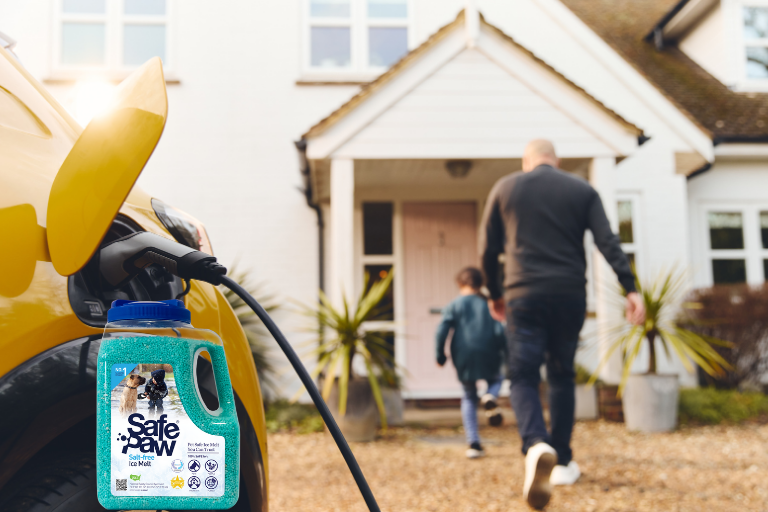
In the heart of winter's grip, the shimmering crystals of rock salt emerge as a go-to solution for many households battling icy driveways and walkways. These gritty, white granules are often sprinkled generously to reclaim paths from the ice. But what is it about rock salt that makes it so effective? And while it may be a popular choice, are there unintended consequences to its use?
The Science Behind Rock Salt
Rock salt, also known as halite, is essentially the mineral form of sodium chloride. The same chemical composition found in our table salt, rock salt is mined from underground salt deposits left by dried-up ancient bodies of water.
When spread on ice, rock salt goes to work by lowering the freezing point of water. Instead of freezing at 32°F (0°C), the water's freezing point drops, causing the ice to melt. This process is termed 'freezing point depression.'
Pet Safe Ice Melt
Rock Salt’s Role as Snow Salt
Beyond the household, rock salt, often termed "snow salt", is a staple for city and state road departments. It's a cost-effective measure to keep roads clear, ensuring safer commutes during snowy or icy conditions. Large trucks are often seen distributing generous amounts of these granules on roadways before a snowstorm to prevent ice formation.
The Downside of Salting
However, as with most things in life, there's a trade-off. The widespread use of rock salt has raised environmental and infrastructural concerns:
- Environmental Impact: The runoff from melted snow and ice, saturated with high salt levels, can make its way into freshwater ecosystems, harming aquatic life. Plants along roadsides or near walkways can also suffer from dehydration due to the osmotic effect of salt.
- Infrastructure Damage: Rock salt can accelerate the corrosion process in metals. This is not just a concern for car owners, but also for cities that invest heavily in bridges and road infrastructures.
- Concrete Deterioration: The freeze-thaw cycle, exacerbated by rock salt usage, can lead to the cracking and spalling of concrete surfaces.
- Pet and Human Health: While humans might avoid eating rock salt, our pets might not be so discerning. Ingestion can lead to health complications, and even its residue on paws or hands can lead to skin irritation.
The Safe Paw Alternative
Given these downsides, there's a growing demand for safer, more eco-friendly alternatives. Enter Safe Paw, a beacon of hope in the icy wilderness.
Safe Paw is not just another ice melt. It's a paradigm shift in how we approach the problem of icy walkways and driveways. Here's what makes it stand out:
- Non-corrosive and non-conductive formula: Safe for use on cured concrete, it won't hasten its deterioration.
- Safety First: Whether kids, pets, or adults, Safe Paw is safe for all. Even if ingested, it won’t harm your furry friends or little ones.
- Long-lasting Effect: Its concentrated formula means you can use half the amount you’d typically use with regular salt. And once applied, it lasts on the surface for up to 72 hours!
- Free from Harmful Chemicals: Safe Paw prides itself on being salt-free, chlorine-free, and acetate-free. This commitment ensures minimum environmental impact.
- User-Friendly Packaging: Packed in an easy-to-use consumer jug, it’s ready for immediate application on your walkways.
https://youtu.be/Hk4_b-Yc3bQ
To Salt or Not to Salt?
In understanding the power of rock salt, we also come face-to-face with its limitations and potential harm. While it will remain a staple for many, it's essential to consider its broader impacts. Solutions like Safe Paw not only challenge the status quo but provide a clear path forward – ensuring safety without the environmental and infrastructural costs. It's time to rethink our icy solutions, and Safe Paw is leading the way.
https://safepaw.com/unveiling-the-power-and-applications-of-rock-salt/
Comments
Post a Comment